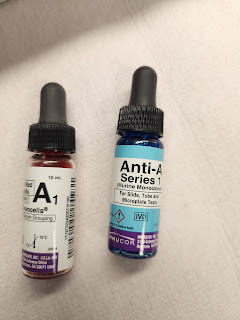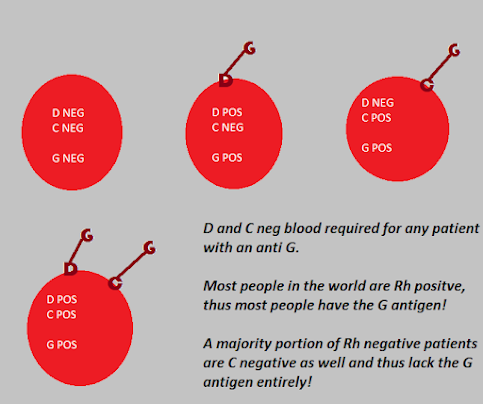Where do human ABO isoagglutinins originate?
Where do they come from? Why are they here?
We innately know as part of our Blood Bank training that ABO isoagglutinins exist and they play a part in how we perform a patient's blood type. O patients will have Anti-A and Anti-B against the A and B antigens in their plasma. A patients will have Anti-B, B patients will have Anti-A, and AB patients will have no isoagglutinins. How did these antibodies get there? If their immune system has never seen incompatible blood types, how does the immune system know to make these antibodies?
As we understand from the adaptive immune system, antibodies are created through prior antigen sensitization. ABO isoagglutinins, on the other hand, are consistently dubbed "naturally occurring". Karl Landsteiner was of the opinion that these antibodies were naturally and spontaneously produced based on red cell antigen makeup.
Any isoagglutinins in a newborn's plasma is that of the mother. This is typically why neonates are given O cells, to prevent any type mismatches with the mothers plasma still within the neonate. As time goes on the neonate will begin to form its own immune system and the mothers antibodies will disappear in favor of the neonate's. Months into life we may start to see the formation of their own isoagglutinins. But why? Did the mother's immune system provide instructions on how to create isoagglutinins based on a certain blood type result?
It is actually not cemented in science or completely agreed to as to where ABO isoagglutinin antibodies come from. One of the most commonly held thoughts is that the antibodies DO arise as a result of antigenic stimulation, just not from blood, but from the environment.
Environmental antigens such as from food, dirt, and especially gut bacteria may contain cross-reactive antigens that cause ABO isoagglutinins to form. A popular study showed that chickens kept in a sterile environment would produce anti-B when presented with bacteria known to produce high-levels of B or B-like antigen. They were able to get the chickens to produce anti-A, but the strength of the antibody never amounted to anything more than weak. This kept researchers on their toes about whether there was more out there to learn.
It wasn't until the discovery of B lymphocyte subsets that more information and research began to focus on the ABO isoagglutinin origins. It is now known that there are different subsets of B cells. B1 cells and B2 cells offer different functions. B1 cells function as an arm of innate immunity and do NOT require antigenic stimulation to be produced. B2 cells are the more well known "adaptive" immunity cells that arise as a result of antigenic stimulation and provide lasting immunological memory.
It is believed there is a link between ABO isoagglutinins and B1 cells and that the ABO linked B1 cells are created as a result of genetic information being passed down through generations.
It is now thought that there are two phases to ABO isoagglutinin creation. When a baby is born they will soon create the B1 cells, capable of creating Anti-A and/or Anti-B isoagglutinins, usually always IgM. It has been shown that newborns do make B1 cells almost exclusively that early on in age. As they age, and their adaptive immune system begins to flourish, B2 cells will begin to be made, which are the typical Memory B cells we are used to that are created in response to an antigenic stimulation. This is where the environmental factors, especially gut bacteria which have A and B like antigens can stimulate the production of additional anti-A or anti-B antibodies.

